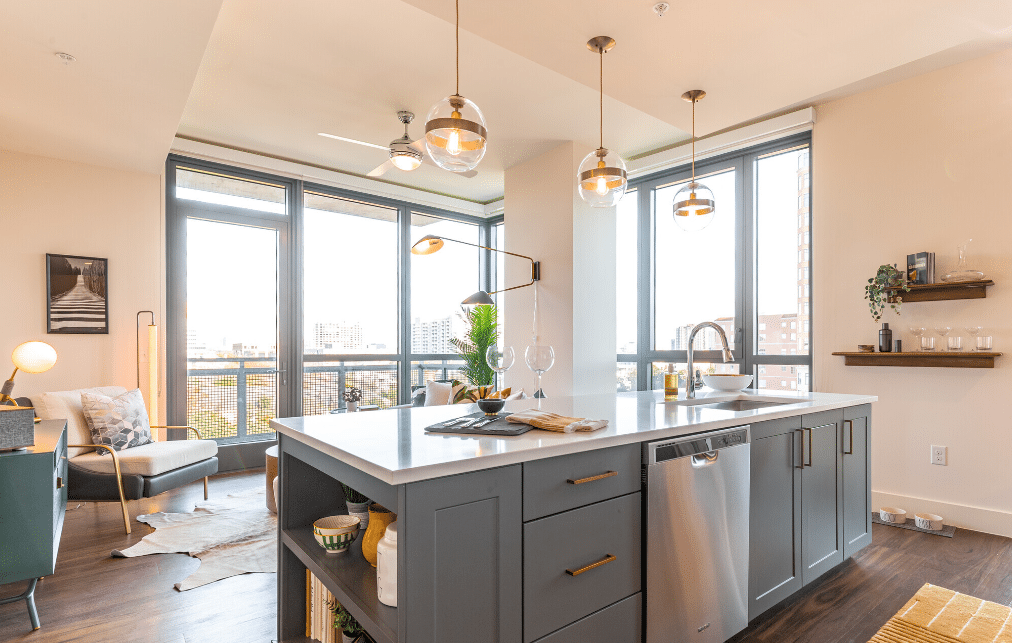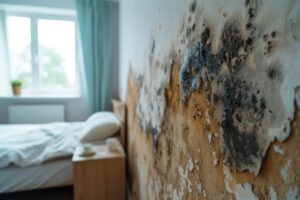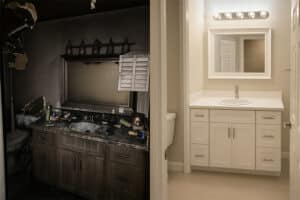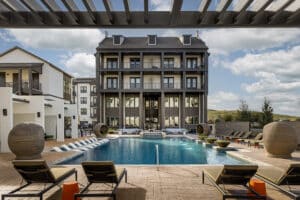In the world of real estate, every day brings change with evolving tenant expectations, asset performance, and market competition. One of the most frequently asked questions that comes up in apartment renovation projects is, should you begin with interior upgrades for apartments or focus first on apartment building exterior upgrades? The answer is different for every multifamily owner. There are various factors involved, including investment strategy, occupancy targets, seasonality, safety needs, and the current condition of the property, that decide the answer.
Table of Contents
ToggleWhy Start with Interior Upgrades for Apartments?
For many investors and property managers, interiors are where you win over residents. Units are where tenants live their daily lives, and where value is often most visible to them.
- Rent Premiums and Faster Lease-Ups
Modern kitchens, updated bathrooms, LVT flooring, new fixtures, and smart-home integrations directly support increased rentals. For value-add assets, refreshed interiors can justify 10–20% rent bumps, especially in competitive urban markets. This translates into faster lease-ups, lower vacancies, and a stronger bottom line. - Staggered Implementation Minimizes Disruption
It is advisable to conduct renovations in different phases to avoid mass disruption to the occupants. This also allows continued cash flow during the renovation cycle, making it easier to manage debt service or investor returns. - Attracting the Right Tenant Profile
Modern interiors indicate to future renters that the community is modern, safe, and created by the use of sustainable and energy-efficient systems. It can also help in increasing the rental value through renovations.
Why Prioritize Apartment Building Exterior Upgrades?
Curb appeal isn’t just cosmetic – it’s strategic. In multifamily, first impressions often determine whether a prospective client shows further interest in the property.
- Positioning the Asset in a Competitive Market
Exterior upgrades such as facade makeovers, repainting, new signs, and lighting touch-ups enhance the identity of the building in the community. These upgrades can reposition an older Class B asset towards a higher desired mid-range or even premium segment. - Outdoor Common Area Renovation Adds Lifestyle Appeal
From pool decks and barbecues to pet parks and rooftop lounges, exterior common area renovation delivers huge lifestyle value, particularly in high-density urban markets. These amenities encourage community interaction and attract remote workers who require more livable space. - Preventative Maintenance and Code Compliance
In aging properties, exterior problems, such as roofing, windows, insulation, or damaged stucco; can result in expensive liability if not addressed. Being proactive in fixing these things upfront guarantees code compliance, increases energy efficiency, and lowers long-term operating expenses.
Interior vs. Exterior: What Comes First in Value-Add Renovation?
While both are important, sequencing matters.
- Step 1: Start with Safety and Structure
Always remember that all kinds of aesthetic upgrades should precede critical repairs. Structural soundness, roof functionality, window sealing, and ADA requirements are deal-breakers. These aspects not only safeguard your investment, but they also often become mandated by city building inspection regulations. - Step 2: Evaluate Leasing and Marketing Strategy
If your objective is a repositioning effort, beginning on the outside can assist in changing how the market perceives the property. If your target is tenant retention or the improvement of NOI, however, inside work could provide more immediate ROI. - Step 3: Budget in Phases, Not Silos
Do not compartmentalize interior and exterior renovations. Savvy owners implement a phased capital program to deploy improvements over 12–36 months, coordinating activity around peak leasing times and cash flow.
Best Practices: Interior and Exterior Upgrades for Apartment Owners
- Conduct a Capital Needs Assessment (CNA) to evaluate and prioritize upgrades based on urgency.
- Ensure that you plan your work well and optimize contractor mobilization.
- Utilize cost segregation studies to accelerate depreciation on specific upgrade categories.
- Carry out tenant surveys to evaluate what amenities and upgrades matter the most – interiors and exteriors.
There is no universal answer to whether you should renovate inside or outside first. Experts recommend a strategic combination of both that is suitable to your space and requirements. You must prioritize structural and safety upgrades first. Then align exterior improvements with branding and positioning goals while rolling out interior upgrades to drive leasing velocity and revenue lift.
At Renu, we specialize in delivering customized renovation plans that balance apartment renovations with operational realities that help contribute to asset performance and tenant satisfaction. Whether you’re planning a value-add renovation strategy for multifamily owners or a full-scale repositioning, our team is ready to guide you through each phase of the process.
#ApartmentRenovations #MultifamilyOwners #MultifamilyRenovations #InteriorUpgrades #ExteriorUpgrades #MuiltifamilyRepairs #LasVegas #Phoenix #Denver #Houston #SanDiego #RenovationContractors #ExteriorRenovations #InteriorRenovations







